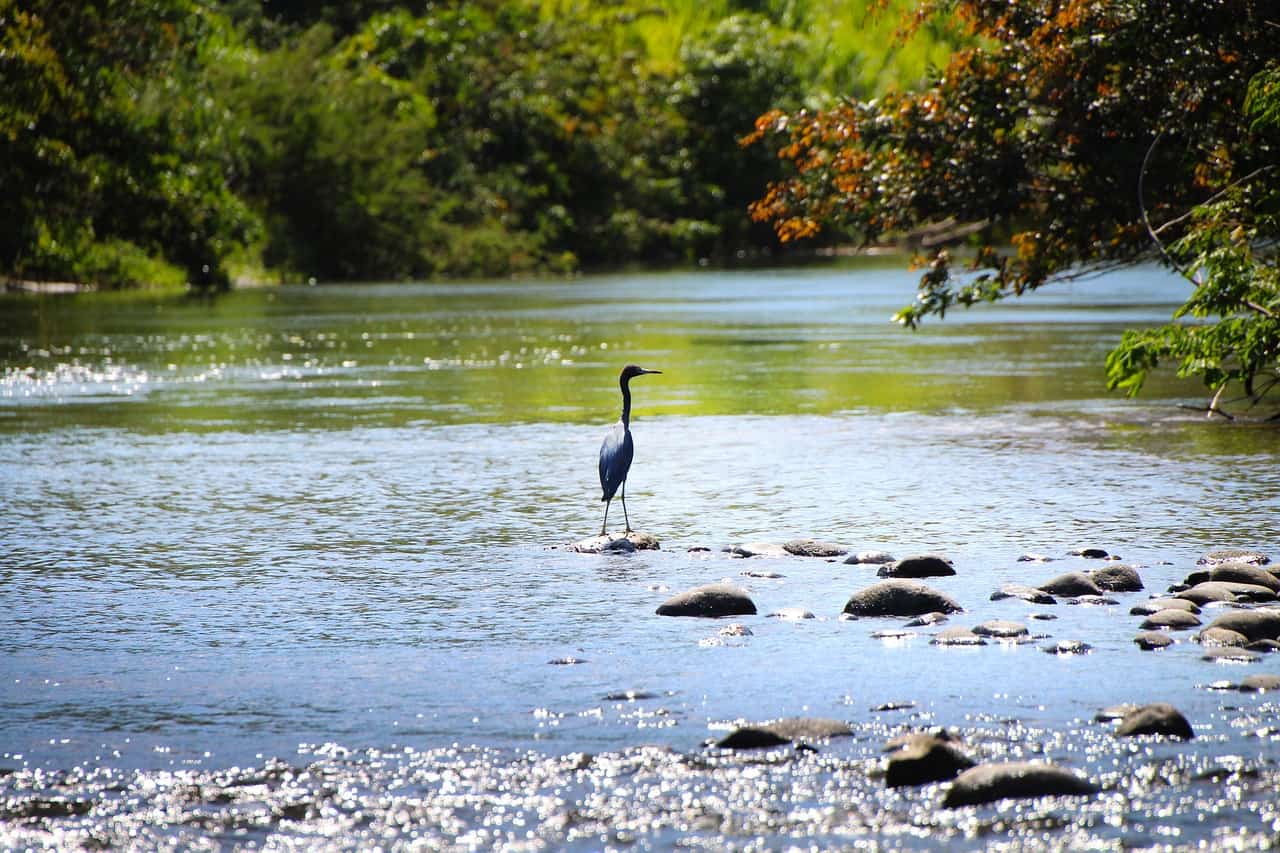Restoring even narrow strips of forests to riverfronts can have transformative effects on improving water quality, say scientists who examined the benefits of increasing riparian vegetation in Costa Rica.
Vegetation planted along rivers and streams to a width of between 10 meters and 50 meters would serve as natural filters and buffers by absorbing harmful pollutants in runoff and keeping them out of waterways, according to scientists at Stanford University.
“Forests around rivers are key places to target for restoration because they provide huge benefits with very little impediment to productive land,” says Kelley Langhans, a PhD student in biology at Stanford who was an author of the study. “A small investment could have a really big impact on the health of people and ecosystems.”
Using computers, the scientists modeled the effects of reforesting 10m-wide strips along rivers in Costa Rica. Their results showed that reforestation would boost retention of phosphorus by nearly 86%, nitrogen by more than 81%, and sediment by about 4%.
“This reforestation would be most impactful in areas below steep slopes with erosion-prone land uses (such as pastures), high levels of fertilizer application (such as widely cultivated oil palm trees), and low levels of nutrient retention (such as urban areas),” they explain.
In addition, reforestation in this manner would also expand forest cover by about 2% nationwide, leading to an increase of 1.4% in carbon sequestration.
All these changes could be greatly beneficial for large numbers of people who depend on rivers for drinking water around Costa Rica, the scientists say.
“When quantifying the benefits of ecosystem restoration, it’s crucial to consider how it affects people, especially the most vulnerable populations,” Langhans says. “That is why in this research we explicitly mapped out how increases in water quality would reach those who rely on rivers the most.”
Even regions with water treatment infrastructure could benefit because such infrastructure is vulnerable to hurricanes and earthquakes. “As recently as 2020, a tropical storm combined with a hurricane knocked out water service to 120,000 Costa Ricans for several days, forcing people to temporarily rely on other water sources, including streams,” the researchers note.
“Typical water treatment methods also do not remove nitrates, which are especially susceptible to leaching into groundwater due to their high solubility. This is a particular concern in Costa Rica, which uses nitrogen-based fertilizers at one of the highest rates in the world,” they add.
Most of the land that has been earmarked for reforestation by the scientists to create buffers of vegetation currently comprises farmland and pasture.
“Past research has shown that Costa Rican farmers value trees on their land and are generally supportive of reforestation, but feel that the upfront costs of transitioning to forest, and, on more productive lands, the opportunity costs of forgoing agricultural production, are too high,” the scientists say. “Improved financial incentives and community-based efforts could help.”
Costa Rica is currently implementing a National Decarbonization Plan, which includes increasing forest cover to 60%. The new research could help inform that policy.
“Our study provides a model for using realistic, policy-based scenarios to pinpoint areas where forest restoration could have the largest impact in terms of improving people’s health and meeting national adaptation and emissions goals,” stresses study author Rafael Monge Vargas, director of Costa Rica’s National Geoenvironmental Information Center in the Ministry of Environment and Energy.
This story first appeared on Sustainability Times
© 2022 Sustainability Times.
This article is licensed under a Creative Commons Attribution-ShareAlike 4.0 SA International License.












